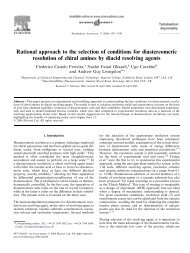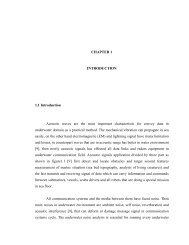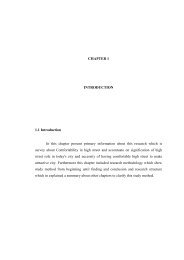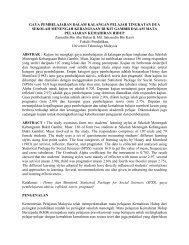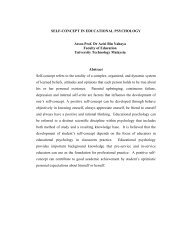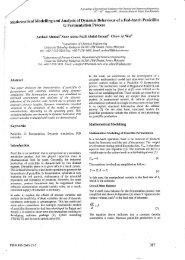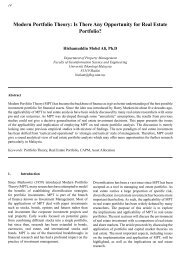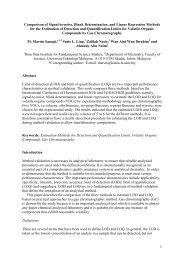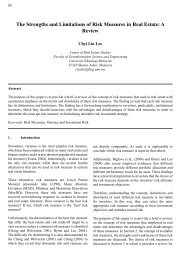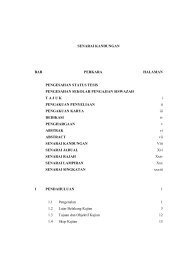Syrthesis of Carbon Canotubes (CNTS) Crown Over Srpported ...
Syrthesis of Carbon Canotubes (CNTS) Crown Over Srpported ...
Syrthesis of Carbon Canotubes (CNTS) Crown Over Srpported ...
Create successful ePaper yourself
Turn your PDF publications into a flip-book with our unique Google optimized e-Paper software.
3. Results and Discussion<br />
The gro$4h process <strong>of</strong> <strong>CNTS</strong> was found to be strol1gly dependent on the<br />
catalysfsupport interaotion [9]. In a similar worh, it was rcportcd that sttpp<strong>of</strong>is play an<br />
el.ectr\e rol. rn e\po.rng lhc d.tr\e 'rle\ un lhe cdldllsl n]..d1" .or r \ f, pfo,ltrcllon<br />
The metals also have some degree <strong>of</strong>affinity to the support [10].<br />
The SEM images <strong>of</strong> lhe <strong>CNTS</strong> synthesized over different Nelal supporled<br />
catalysts at specific feaction te peratures arc shown in Figures 1 and 2 Al1 <strong>of</strong>the as_<br />
grown CNTs Nere exanined under tbe scanning el,:cffon microscopc without any<br />
pur;ficatioo. Results obtained showed that the as-gro*'n <strong>CNTS</strong> floss \\iere ir vanous<br />
fonns ard sizes. From ligures I (a)-(c), the growth demilies <strong>of</strong> <strong>CNTS</strong> over<br />
rnonometnllic alu ina-supp<strong>of</strong>ied catalyst were less dense es conpared with binetallic<br />
and trinetallic alumirla supp<strong>of</strong>ted catalyst, liigures I (d)-(e). h the later cases, the<br />
Ie/Co- AlrO: and Fe/Co,Ni- Alzor show€d excclienl aclivity in gro\ring align€d <strong>CNTS</strong><br />
floss. The deDsity <strong>of</strong>the aligned <strong>CNTS</strong> was cxtremely high almost co1'ering the surfaoe<br />
<strong>of</strong> the snpporicd calalyst.<br />
Sin'rilar pattems in the growth <strong>of</strong>the <strong>CNTS</strong> were obsened for <strong>CNTS</strong> floss grcwn<br />
over nolecular sieve-supporled catalysts- l'he as grown <strong>CNTS</strong> were less deuse and<br />
randomly grown on the surface <strong>of</strong> the MS support (Figurcs 2 (a)-(d)). Ii can also be<br />
observed that the <strong>CNTS</strong> floss grown over the Ms-supported catalysts, showed white<br />
spots at mosi <strong>of</strong>theil tubular tips,Iigure 3. These whiie spois originated irom the rrelrl<br />
cluster 1101. ]'his indicated thet the <strong>CNTS</strong> werc grcwn by the 'tip growth model' wlttl<br />
weak catalyst-support interactiorl [11]. The necessary carbon f-eed stock supplied [,,nr<br />
th.. catalylic decomposilion <strong>of</strong> acetylene dissolved in melallic species to lbrm<br />
metastable rn€liLl calbide. This metastable metal carbide will dissolve more carbon<br />
resulting ir en ove$atlrration olcarbon. Subsequ€ntly. graphio-carboN \lill precipate to<br />
form <strong>CNTS</strong> by keeping metallic cluster at dle tip <strong>of</strong>the tubes.



